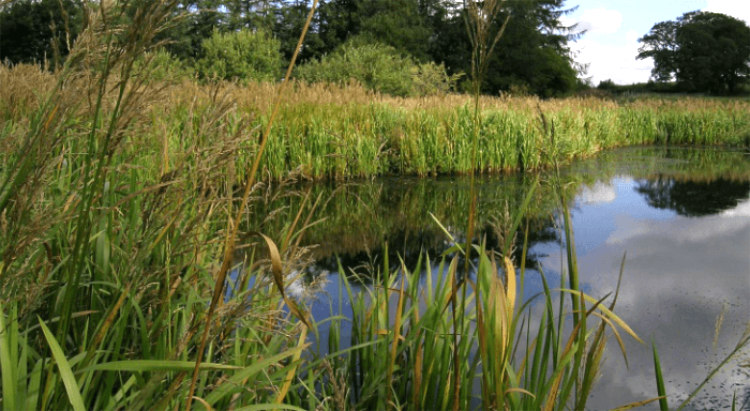SuDS (Sustainable Drainage System) technology has long been in use in urban developments where soils have been effectively capped by roads, car parks, and buildings. Aspects of these systems are being adopted by farms and rural businesses to better manage water, both in terms of handling clean and lightly contaminated water to keep it out of collection facilities and ‘slowing the flow’ to reduce flooding risk.
Correctly sited, Rural SuDS (RSuDS) can be an asset to your business, protecting the receiving water and increasing biodiversity around the farm. Before considering a RSuDS a steading assessment could highlight areas where simple changes could prevent the mixing of clean and dirty water. Read our top tips on the ‘Ideas for keeping clean and dirty water separate’ webpage here.
Types of RSuDS
- Retention pond – this feature allows the initial collection and short-term storage of clean water, providing the opportunity for sediment to settle, and managing the rate at which water enters a watercourse or clean water drain. The typical area of a pond is 3 – 7% of the catchment area.
- Swale – a wide, shallow ditch-like feature which slows and treats clean water.
- Sediment Trap – a containment area where surface water run-off is temporarily stored to allow sediment to settle out before being discharged (normally to another measure such as a retention pond).
- Constructed Farm Wetland (CFW)– a relatively large shallow pond, or most commonly a series of smaller, linked ponds or cells, that takes run-off (which can be lightly contaminated but should not contain slurry or silage effluent) and holds it for long enough for sediments to settle, and pollutants to be removed through plant uptake and breakdown in the soil. The typical area of a Constructed Farm Wetland is 200% of the catchment area. It is important that an existing natural wetland is not used as a CFW – both because it is unlikely that an existing wetland would have the design features which give the most efficient treatment of water, together with the potential negative impacts on existing habitats.
The types and size of measures required by a business will be dictated by the individual requirements of a given steading, and in order to fully consider all issues, it is recommended that the current management of slurry and dirty water (e.g. from areas such as external aprons where cows have access) is also considered at this stage.

